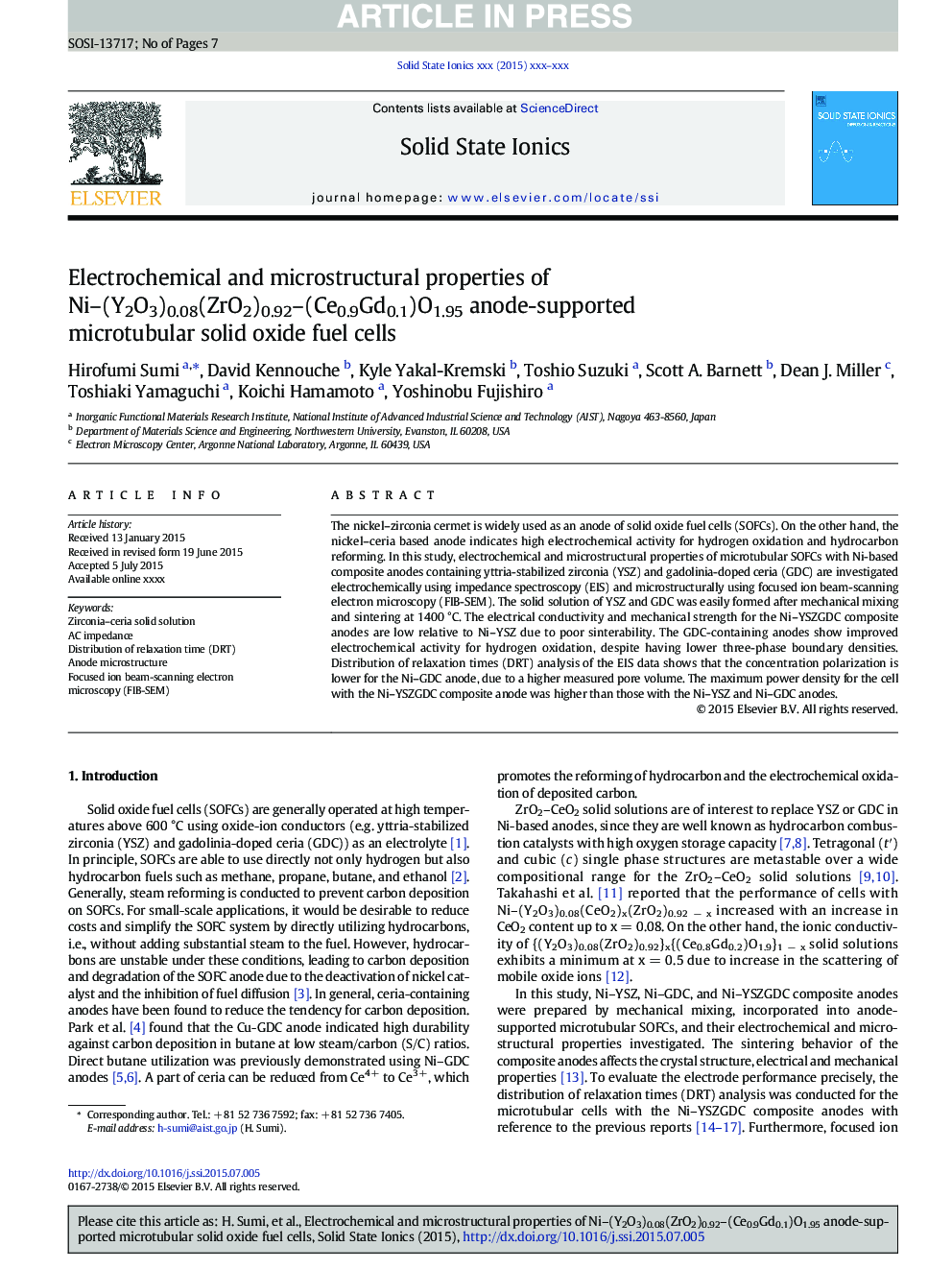| Article ID | Journal | Published Year | Pages | File Type |
|---|---|---|---|---|
| 7745641 | Solid State Ionics | 2016 | 7 Pages |
Abstract
The nickel-zirconia cermet is widely used as an anode of solid oxide fuel cells (SOFCs). On the other hand, the nickel-ceria based anode indicates high electrochemical activity for hydrogen oxidation and hydrocarbon reforming. In this study, electrochemical and microstructural properties of microtubular SOFCs with Ni-based composite anodes containing yttria-stabilized zirconia (YSZ) and gadolinia-doped ceria (GDC) are investigated electrochemically using impedance spectroscopy (EIS) and microstructurally using focused ion beam-scanning electron microscopy (FIB-SEM). The solid solution of YSZ and GDC was easily formed after mechanical mixing and sintering at 1400 °C. The electrical conductivity and mechanical strength for the Ni-YSZGDC composite anodes are low relative to Ni-YSZ due to poor sinterability. The GDC-containing anodes show improved electrochemical activity for hydrogen oxidation, despite having lower three-phase boundary densities. Distribution of relaxation times (DRT) analysis of the EIS data shows that the concentration polarization is lower for the Ni-GDC anode, due to a higher measured pore volume. The maximum power density for the cell with the Ni-YSZGDC composite anode was higher than those with the Ni-YSZ and Ni-GDC anodes.
Keywords
Related Topics
Physical Sciences and Engineering
Chemistry
Electrochemistry
Authors
Hirofumi Sumi, David Kennouche, Kyle Yakal-Kremski, Toshio Suzuki, Scott A. Barnett, Dean J. Miller, Toshiaki Yamaguchi, Koichi Hamamoto, Yoshinobu Fujishiro,
